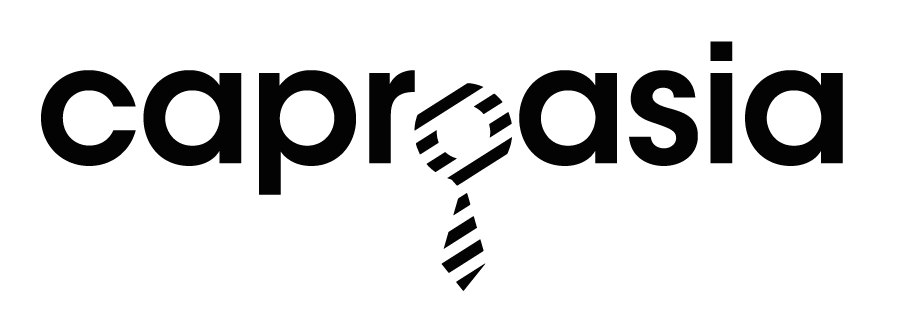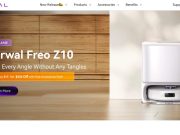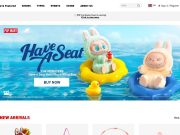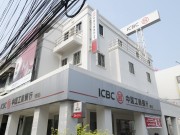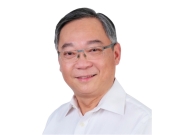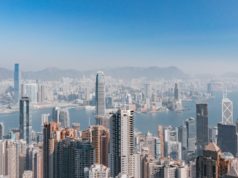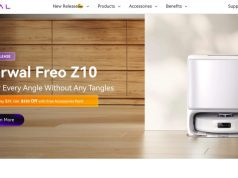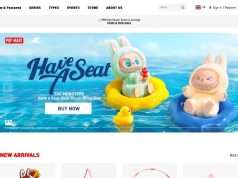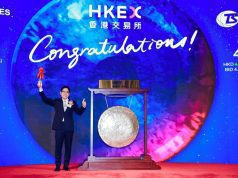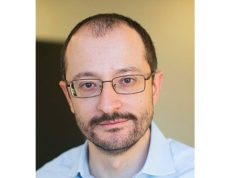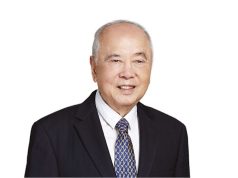Thinking Ahead Institute The Asset Owner 100 2024 Study: $26.3 Trillion AUM, Asset Owners Type are Pension Funds 51.2%, Sovereign Wealth Funds 38.9%, Master Trusts / OCIO 9.3%, Asset Allocation Equity 43.2%, Fixed Income 29.7%, Alternatives 27.1%, Top 10 Asset Owners Government Pension Investment Fund (Japan), Norges Bank Investment Management (Norway), China Investment Corporation, SAFE Investment Company (China), Abu Dhabi Investment Authority (UAE), Kuwait Investment Authority (Kuwait), National Pension Service (South Korea), Federal Retirement Thrift (United States), GIC (Singapore), Public Investment Fund / Sanabil Investments (Saudi Arabia)
6th February 2025 | Hong Kong
The Thinking Ahead Institute has released The Asset Owner 100 2024 Study, providing key insights and asset allocation of the the top 100 largest asset owners in 2023 (Pension Funds, Sovereign Wealth Funds, Master Trusts / OCIO ~ Outsourced Chief Investment Officer). Top 100 Asset Owners AUM – $26.3 trillion (+12.3%). Top 20 Assets Owners – $14.6 trillion, 55.6% of total AUM. Top 5 Assets Owners – $6.4 trillion, 24.4% of total AUM . Top 100 Asset Owners Asset Allocation (Weighted) – Equity 43.2%, Fixed Income 29.7%, Alternatives 27.1%. Top 20 Asset Owners – Asset Allocation – Equity 48.3%, Fixed Income 29.4%, Alternatives 23.3%. Asset Owners Type – Pension Funds 51.2%, Sovereign Wealth Funds 38.9%, Master Trusts & OCIO 9.3%. Asset Owners by Region – North America 33% ($8.61 trillion), APAC 33% ($8.67 trillion), EMEA 32.4% 34% ($9.03 trillion). No. of Asset Owners by Region – North America 49, EMEA 30, APAC 21. Top 5 Country Share of Top 100 Asset Owners – United States 27%, China 10%, Japan 8%, United Arab Emirates 7%, Norway 6%. Top 10 Asset Owners – Government Pension Investment Fund (Japan), Norges Bank Investment Management (Norway), China Investment Corporation, SAFE Investment Company (China), Abu Dhabi Investment Authority (UAE), Kuwait Investment Authority (Kuwait), National Pension Service (South Korea), Federal Retirement Thrift (United States), GIC (Singapore), Public Investment Fund / Sanabil Investments (Saudi Arabia). Top 10 Sovereign Wealth Funds – Norges Bank Investment Management, China Investment Corporation, SAFE Investment Company, Abu Dhabi Investment Authority, Kuwait Investment Authority, GIC, Public Investment Fund / Sanabil Investments, Qatar Investment Authority, Investment Corporation of Dubai, Temasek. Top 10 Pension Funds – Government Pension Investment Fund, National Pension Service, Federal Retirement Thrift, APG, Canada Pension Plan, California Public Employees, Central Provident Fund, National Social Security Fund, CDPQ, General Organization of Social Insurance. Top 10 Master Trusts / OCIO – Mercer, Goldman Sachs, BlackRock, AON, WTW Investment Services, Russell Investments, State Street Global Advisors, Northern Trust, CAPTRUST Financial Advisors, JP Morgan Asset & Wealth Management, Morgan Stanley. Top 10 Foundations & Endowments – Novo Holdings, The Bill & Melinda Gates Foundation, Lilly Endowment, President & Fellows of Harvard College, Wellcome Trust, Yale University Investment Fund ,Stanford University, National Rural Utilities Cooperative Finance Corporation, Trustees of Princeton University, Howard Hughes Medical Institute. Top 10 Insurance Companies – Ping An Insurance, Allianz, Berkshire Hathaway, China Life Insurance, AXA, Prudential Financial, MetLife, Legal & General Group, Manulife Financial Corporation, Power Financial. See below for key findings & summary | View report here:
“ Thinking Ahead Institute The Asset Owner 100 2024 Study: $26.3 Trillion AUM, Asset Owners Type are Pension Funds 51.2%, Sovereign Wealth Funds 38.9%, Master Trusts / OCIO 9.3%, Asset Allocation Equity 43.2%, Fixed Income 29.7%, Alternatives 27.1%, Top 10 Asset Owners Government Pension Investment Fund (Japan), Norges Bank Investment Management (Norway), China Investment Corporation, SAFE Investment Company (China), Abu Dhabi Investment Authority (UAE), Kuwait Investment Authority (Kuwait), National Pension Service (South Korea), Federal Retirement Thrift (United States), GIC (Singapore), Public Investment Fund / Sanabil Investments (Saudi Arabia) “
Thinking Ahead Institute The Asset Owner 100 2024 Study: $26.3 Trillion AUM, Asset Owners Type are Pension Funds 51.2%, Sovereign Wealth Funds 38.9%, Master Trusts / OCIO 9.3%, Asset Allocation Equity 43.2%, Fixed Income 29.7%, Alternatives 27.1%, Top 10 Asset Owners Government Pension Investment Fund (Japan), Norges Bank Investment Management (Norway), China Investment Corporation, SAFE Investment Company (China), Abu Dhabi Investment Authority (UAE), Kuwait Investment Authority (Kuwait), National Pension Service (South Korea), Federal Retirement Thrift (United States), GIC (Singapore), Public Investment Fund / Sanabil Investments (Saudi Arabia)

The Thinking Ahead Institute has released The Asset Owner 100 2024 Study, providing key insights and asset allocation of the the top 100 largest asset owners in 2023 (Pension Funds, Sovereign Wealth Funds, Master Trusts / OCIO ~ Outsourced Chief Investment Officer). See below for key findings & summary | View report here
Thinking Ahead Institute The Asset Owner 100 2024 Study
Summary:
- Top 100 Asset Owners AUM – $26.3 trillion (+12.3%)
- Top 20 Assets Owners – $14.6 trillion, 55.6% of total AUM
- Top 5 Assets Owners – $6.4 trillion, 24.4% of total AUM
- Top 100 Asset Owners Asset Allocation (Weighted) – Equity 43.2%, Fixed Income 29.7%, Alternatives 27.1%
- Top 20 Asset Owners – Asset Allocation – Equity 48.3%, Fixed Income 29.4%, Alternatives 23.3%
- Asset Owners Type – Pension Funds 51.2%, Sovereign Wealth Funds 38.9%, Master Trusts & OCIO 9.3%
- Asset Owners by Region – North America 33% ($8.61 trillion), APAC 33% ($8.67 trillion), EMEA 32.4% 34% ($9.03 trillion)
- No. of Asset Owners by Region – North America 49, EMEA 30, APAC 21
- Top 5 Country Share of Top 100 Asset Owners – United States 27%, China 10%, Japan 8%, United Arab Emirates 7%, Norway 6%
- Top 10 Asset Owners – Government Pension Investment Fund (Japan), Norges Bank Investment Management (Norway), China Investment Corporation, SAFE Investment Company (China), Abu Dhabi Investment Authority (UAE), Kuwait Investment Authority (Kuwait), National Pension Service (South Korea), Federal Retirement Thrift (United States), GIC (Singapore), Public Investment Fund / Sanabil Investments (Saudi Arabia)
- Top 10 Sovereign Wealth Funds – Norges Bank Investment Management, China Investment Corporation, SAFE Investment Company, Abu Dhabi Investment Authority, Kuwait Investment Authority, GIC, Public Investment Fund / Sanabil Investments, Qatar Investment Authority, Investment Corporation of Dubai, Temasek
- Top 10 Pension Funds – Government Pension Investment Fund, National Pension Service, Federal Retirement Thrift, APG, Canada Pension Plan, California Public Employees, Central Provident Fund, National Social Security Fund, CDPQ, General Organization of Social Insurance
- Top 10 Master Trusts / OCIO – Mercer, Goldman Sachs, BlackRock, AON, WTW Investment Services, Russell Investments, State Street Global Advisors, Northern Trust, CAPTRUST Financial Advisors, JP Morgan Asset & Wealth Management, Morgan Stanley
- Top 10 Foundations & Endowments – Novo Holdings, The Bill & Melinda Gates Foundation, Lilly Endowment, President & Fellows of Harvard College, Wellcome Trust, Yale University Investment Fund ,Stanford University, National Rural Utilities Cooperative Finance Corporation, Trustees of Princeton University, Howard Hughes Medical Institute
- Top 10 Insurance Companies – Ping An Insurance, Allianz, Berkshire Hathaway, China Life Insurance, AXA, Prudential Financial, MetLife, Legal & General Group, Manulife Financial Corporation, Power Financial
Asset Owner Insights:
- Investment Macro – Global investment macro environment has been marked by volatility and mixed performance across asset classes. Interest rates reached significant highs in 2023. After a sustained period of elevated rates aimed at controlling inflation, central banks began to implement gradual rate cuts in the latter half of 2024, marking the first reductions in years. However, market volatility remains high with uncertainty due to geopolitical events and several major elections.
- Sustainability – ESG (Environmental, Social, and Governance) factors are now generally accepted by most investors as financially material and are essential tools for generating long-term value, however it is challenged by politicisation. The next evolutionary step is the shift toward sustainability, a broader term that prioritises both financial and wider considerations with a long-term, intergenerational focus.
- Pathway to Net Zero – 52% of the top 100 asset owners made net zero commitments. After an initial wave of enthusiasm in the early 2020s, net-zero commitments among asset owners have stalled, reflecting a shift in momentum.
- Political influence – The investment industry is increasingly subject to political influence as governments leverage policy and regulation to shape financial strategies that align with national priorities … … As a result, the investment landscape is evolving into a domain where asset owners are not only influenced by market dynamics but also by policy and political shifts, requiring a sophisticated approach to manage the intersections of financial return and regulatory compliance and stakeholder influences.
- Technology – Asset owners are increasingly recognising the importance of artificial intelligence (AI) and data- driven strategies to enhance their investment processes and organisational effectiveness.
- Rising Complexity – The investment landscape is becoming increasingly complex due to rising uncertainty, expanding regulations, and the involvement of a growing number of stakeholders, each with unique interests and expectations … … Navigating this heightened complexity demands a culture of innovation, robust organisational practices and governance, and a forward-thinking mindset.
- Geopolitical Risk – Geopolitics has become a leading driver of market risk, but in common with other risks that are systemic its integration into the investment process has been a challenge … … As the global economy pivots in certain areas toward regionalisation, investors must adapt by developing strategies that capture emerging, diverse opportunities across various markets, balancing growth potential with a heightened awareness of global and local risks.
- Risk 2.0 – Traditional risk management relying heavily on historical data and linear models struggles to keep up with today’s complex, interconnected risks. Risk 2.0 is a conceptual framework to better identify, understand and manage all risks particularly those that arise from complex, systemic sources with limited historical precedent. These include geopolitical tensions, climate change, environmental degradation, inequality and cybersecurity – each posing challenges that extend beyond traditional risk metrics. Risk 2.0, therefore, goes beyond conventional measures like volatility alone but also considers interconnected nature of risks and aims to provide safeguard long-term mission integrity. This forward-thinking approach aligns well with Total Portfolio Approach (TPA) principles, focusing on meeting investment goals in sustainable ways.
- Systems Thinking – Systems thinking is an approach to understanding complex, interconnected systems by recognising the relationships and interactions among their parts rather than focusing on individual components in isolation … … The rise in systemic risk puts emphasis on the need for forward thinking and re-positioning strategy with investment processes that are able to model, measure and adapt to systemic risk.
Thinking Ahead Institute The Asset Owner 100 2024 Study
1) Asset Owners AUM
2023 AUM
- Top 100 Asset Owners AUM – $26.3 trillion (+12.3%)
- Top 5 Assets Owners – $6.4 trillion, 24.4% of total AUM
- Top 20 Assets Owners – $14.6 trillion, 55.6% of total AUM
Asset Owners Type:
- Pension Funds – 51.2%
- Sovereign Wealth Funds – 38.9%
- Master Trusts / OCIO – 9.3%
OCIO ~ Outsourced Chief Investment Officer
Asset Owners by AUM:
- Pension Funds – $13.5 trillion
- Sovereign Wealth Funds – $10.2 trillion
- Master Trusts / OCIO – $2.6 trillion
2023 AUM Change:
- Pension Funds: +8.9%
- Sovereign Wealth Funds: +12.2%
- Master Trusts / OCIO: +26.4%
- Total: +12.3%
No. of Asset Owners by Region:
- North America – 49
- EMEA – 30
- APAC – 21
EMEA ~ Europe, Middle East & Africa
Asset Owners by Region:
- North America – 33% ($8.61 trillion)
- APAC – 33% ($8.67 trillion)
- EMEA – 34% ($9.03 trillion)
North America AUM:
- Pension Funds – 69%
- Sovereign Wealth Funds – 2%
- Master Trusts / OCIO – 28%
- Foundation & Endowment – 0%
EMEA AUM:
- Pension Funds – 29%
- Sovereign Wealth Funds – 70%
- Master Trusts / OCIO – 0%
- Foundation & Endowment – 2%
APAC AUM:
- Pension Funds – 57%
- Sovereign Wealth Funds – 43%
- Master Trusts / OCIO – 0%
- Foundation & Endowment – 0%
2) Country Share
Country Share of Top 100 Asset Owners AUM:
- United States – 27%
- China – 10%
- Japan – 8%
- United Arab Emirates – 7%
- Norway – 6%
- Canada – 6%
- Singapore – 6%
- Saudi Arabia – 5%
- Netherlands – 4%
- Kuwait – 4%
- South Korea – 4%
- Australia – 3%
- Qatar – 2%
- Denmark – 2%
- Malaysia – 1%
- Sweden – 1%
- United Kingdom – 1%
- Other – 5.4%
Country Share of Top 100 Asset Owners (No. of Funds):
- United States – 41
- Canada – 8
- United Arab Emirates – 5
- Australia – 5
- Japan – 4
- Denmark – 4
- China – 3
- Norway – 2
- Singapore – 3
- Saudi Arabia – 3
- Netherlands – 3
- Kuwait – 2
- South Korea – 2
- Sweden – 2
- United Kingdom – 2
- Qatar – 1
- Malaysia – 1
- Other – 9
3) Top 10 Largest Funds
Top 10 Asset Owners:
- Government Pension Investment Fund (Japan) – $1.59 trillion
- Norges Bank Investment Management (Norway) – $1.54 trillion
- China Investment Corporation (China) – $1.24 trillion
- SAFE Investment Company (China) – $1.07 trillion
- Abu Dhabi Investment Authority (UAE) – $968 billion
- Kuwait Investment Authority (Kuwait) – $846 billion
- National Pension Service (South Korea) – $801 billion
- Federal Retirement Thrift (United States) – $782 billion
- GIC Private Limited (Singapore) – $769 billion
- Public Investment Fund / Sanabil Investments (Saudi Arabia) – $764 billion
Top 10 Sovereign Wealth Funds (Country, Founded):
- Norges Bank Investment Management (Norway, 1997) – $1.54 trillion
- China Investment Corporation (China, 2007) – $1.24 trillion
- SAFE Investment Company (China, 1997) – $1.07 trillion
- Abu Dhabi Investment Authority (United Arab Emirates, 1967) – $968 billion
- Kuwait Investment Authority (Kuwait, 1953) – $846 billion
- GIC (Singapore, 1981) – $769 billion
- Public Investment Fund / Sanabil Investments (Saudi Arabia, 1971) – $764 billion
- Qatar Investment Authority (Qatar, 2005) – $510 billion
- Investment Corporation of Dubai (United Arab Emirates, 2006) – $341 billion
- Temasek (Singapore, 1974) – $288 billion
Top 10 Pension Funds (Country, Founded):
- Government Pension Investment Fund (Japan, 2006) – $1.59 trillion
- National Pension Service (South Korea, 1988) – $801 billion
- Federal Retirement Thrift (United States, 1986) – $782 billion
- APG (Netherlands, 1922) – $552 billion
- Canada Pension Plan (Canada, 1997) – $477 billion
- California Public Employees (United States, 1932) – $452 billion
- Central Provident Fund (Singapore, 1955) – $432 billion
- National Social Security Fund (China, 2000) – $364 billion
- CDPQ (Canada, 1965) – $328 billion
- General Organization of Social Insurance (Saudi Arabia, 1969) – $ 320 billion
Top 10 Master Trusts / OCIO:
- Mercer (United States) – $469 billion
- Goldman Sachs (United States) – $328 billion
- BlackRock (United States) – $240 billion
- AON (United States) – $184 billion
- WTW Investment Services (United States) – $163 billion
- Russell Investments (United States) – $161 billion
- State Street Global Advisors (United States) – $153 billion
- CAPTRUST Financial Advisors (United States) – $138 billion
- JP Morgan Asset & Wealth Management (United States) – $112 billion
- Morgan Stanley (United States) – $111 billion
Top 10 Foundations & Endowments:
- Novo Holdings (Denmark) – $164 billion
- The Bill & Melinda Gates Foundation (US) – $75 billion
- Lilly Endowment (US) – $62 billion
- President & Fellows of Harvard College (US) – $50 billion
- Wellcome Trust (UK) – $42 billion
- Yale University Investment Fund (US) – $40 billion
- Stanford University (US) – $36 billion
- National Rural Utilities Cooperative Finance Corporation (US) – $34 billion
- Trustees of Princeton University (US) – $33 billion
- Howard Hughes Medical Institute (US) – $24 billion
Top 10 Insurance Companies:
- Ping An Insurance (China) – $1.63 trillion
- Allianz SE (Germany) – $1.08 trillion
- Berkshire Hathaway (US) – $1.06 trillion
- China Life Insurance (China) – $817 billion
- AXA (France) – $721 billion
- Prudential Financial (US) – $713 billion
- MetLife (US) – $687 billion
- Legal & General Group (UK) – $666 billion
- Manulife Financial Corporation (Canada) – $662 billion
- Power Financial (Canada) – $567 billion
Top 10 State Investment Platforms (SIP):
- Kuwait Investment Authority (Kuwait) – $846 billion
- APG (Netherlands) – $552 billion
- CDPQ (Canada) – $328 billion
- PGGM (Netherlands) – $262 billion
- New York State Common (US) – $246 billion
- BLF (Taiwan) – $214 billion
- MN Services (Netherlands) – $187 billion
- Future Fund Management Agency (Australia) – $186 billion
- Public Service Pension Investment Board (Canada) – $184 billion
- British Columbia Investment (Canada) – $172 billion
State Investment Platforms (SIP) are institutional investors which are entrusted with managing and investing a pool of capital from various depositors or funds; and are usually based in one country. These depositors/funds can range from pension funds, insurance plans, sovereign wealth funds, endowment funds and other organisations. SIP governance structures are impacted by each depositor’s investment policies. State Investment Platforms should not be considered as a mutually exclusive category.
4) Asset Allocation
Asset Allocation (Weighted):
Top 100 Asset Owners – Asset Allocation (Weighted):
- Equity – 43.2%
- Fixed Income – 29.7%
- Alternatives – 27.1%
Top 100 Asset Owners – Asset Allocation (Simple):
- Equity – 38.1%
- Fixed Income – 31.5%
- Alternatives – 30.4%
Top 100 APAC Asset Owners – Asset Allocation (Weighted):
- Equity – 47.8%
- Fixed Income – 34.7%
- Alternatives – 17.5%
Top 100 North America Asset Owners – Asset Allocation (Weighted):
- Equity – 38.9%
- Fixed Income – 26.5%
- Alternatives – 34.6%
Top 100 EMEA Asset Owners – Asset Allocation (Weighted):
- Equity – 42.1%
- Fixed Income – 27.4%
- Alternatives – 30.5%
Top 20 Asset Owners – Asset Allocation:
- Equity – 48.3%
- Fixed Income – 29.4%
- Alternatives – 23.3%
Top 20 APAC Asset Owners – Asset Allocation:
- Equity – 49.4%
- Fixed Income – 34%
- Alternatives – 16.6%
Top 20 North America Asset Owners – Asset Allocation:
- Equity – 38.5%
- Fixed Income – 25%
- Alternatives – 36.5%
Top 20 EMEA Asset Owners – Asset Allocation:
- Equity – 50.7%
- Fixed Income – 24.1%
- Alternatives – 25.2%
5) Asset Owners Insights
Industry Observations:
- Investment Macro – Over the last 12 months, the global investment macro environment has been marked by volatility and mixed performance across asset classes. Interest rates reached significant highs in 2023. The first half of 2024 brought some stabilisation in global markets, as base rates remained relatively flat. After a sustained period of elevated rates aimed at controlling inflation, central banks began to implement gradual rate cuts in the latter half of 2024, marking the first reductions in years. However, market volatility remains high with uncertainty due to geopolitical events and several major elections.
- Sustainability – ESG (Environmental, Social, and Governance) factors are now generally accepted by most investors as financially material and are essential tools for generating long-term value, however it is challenged by politicisation. The next evolutionary step is the shift toward sustainability, a broader term that prioritises both financial and wider considerations with a long-term, intergenerational focus. The net zero investing landscape remains complex, requiring a portfolio-wide approach and strong collaboration between asset owners and managers.
- Pathway to Net Zero – 52% of the top 100 asset owners made net zero commitments. After an initial wave of enthusiasm in the early 2020s, net-zero commitments among asset owners have stalled, reflecting a shift in momentum. While many asset owners initially pledged to align their portfolios with net- zero goals, the complexity of balancing these targets with financial performance and fiduciary responsibilities has created significant challenges. The number of asset owners committing to net zero has remained the same over the past year. This hesitation highlights the difficulties inherent in meeting ambitious environmental targets without compromising financial obligations or investment performance.
- Political influence – The investment industry is increasingly subject to political influence as governments leverage policy and regulation to shape financial strategies that align with national priorities. Political agendas are now more intertwined with asset allocation decisions, particularly in sectors like infrastructure. Mansion House reforms in the UK exemplify this trend, encouraging investment in domestic infrastructure. As a result, the investment landscape is evolving into a domain where asset owners are not only influenced by market dynamics but also by policy and political shifts, requiring a sophisticated approach to manage the intersections of financial return and regulatory compliance and stakeholder influences.
- Technology – Asset owners are increasingly recognising the importance of artificial intelligence (AI) and data- driven strategies to enhance their investment processes and organisational effectiveness. Reflecting this trend, many leading asset owners have significantly increased their spend on technology over the past five years, aiming to harness these advancements for a competitive edge. While AI offers substantial opportunities to access and apply valuable, decision-focused data, it also brings challenges in managing a complex and fast-evolving technological landscape. However, there are promising AI applications that are beginning to simplify data management and mitigate data overload.
Key Challenges:
- Rising Complexity – The investment landscape is becoming increasingly complex due to rising uncertainty, expanding regulations, and the involvement of a growing number of stakeholders, each with unique interests and expectations. 73% of the Asset Owner Peer Study 2024 participants said that managing complexity is their top concern. With that, Business beyond Usual (BbU) initiatives aiming at adapting to new conditions and leveraging technological advances are becoming essential, yet they have struggled to get adequate focus. Navigating this heightened complexity demands a culture of innovation, robust organisational practices and governance, and a forward-thinking mindset.
- Geopolitical Risk – Geopolitics has become a leading driver of market risk, but in common with other risks that are systemic its integration into the investment process has been a challenge. Shifts in geopolitical stability and a trend toward deglobalization are creating new layers of risk and uncertainty, prompting concern among major asset owners like those in the AO100. As the global economy pivots in certain areas toward regionalisation, investors must adapt by developing strategies that capture emerging, diverse opportunities across various markets, balancing growth potential with a heightened awareness of global and local risks.
New asset owner thinking:
- Risk 2.0 – Traditional risk management relying heavily on historical data and linear models struggles to keep up with today’s complex, interconnected risks. Risk 2.0 is a conceptual framework to better identify, understand and manage all risks particularly those that arise from complex, systemic sources with limited historical precedent. These include geopolitical tensions, climate change, environmental degradation, inequality and cybersecurity – each posing challenges that extend beyond traditional risk metrics. Risk 2.0, therefore, goes beyond conventional measures like volatility alone but also considers interconnected nature of risks and aims to provide safeguard long-term mission integrity. This forward-thinking approach aligns well with Total Portfolio Approach (TPA) principles, focusing on meeting investment goals in sustainable ways.
- Systems Thinking – Systems thinking is an approach to understanding complex, interconnected systems by recognising the relationships and interactions among their parts rather than focusing on individual components in isolation. It emphasizes a holistic perspective, acknowledging that changes in one area can have ripple effects throughout the entire system. Systems thinking allows to understand complex systems, such as organisations, at a nuanced level and recognise patterns, comparing different perspectives, and prepare for what might happen in the future. The rise in systemic risk puts emphasis on the need for forward thinking and re-positioning strategy with investment processes that are able to model, measure and adapt to systemic risk.
6) Top 100 Asset Owners
Top 100 Asset Owners by AUM:
- Government Pension Investment Fund – $1.59 trillion
- Norges Bank Investment Management – $1.54 trillion
- China Investment Corporation – $1.24 trillion
- SAFE Investment Company – $1.07 trillion
- Abu Dhabi Investment Authority – $968 billion
- Kuwait Investment Authority – $846 billion
- National Pension – $801 billion
- Federal Retirement Thrift – $782 billion
- GIC Private Limited – $769 billion
- Public Investment Fund / Sanabil Investments – $764 billion
- APG – $552 billion
- Qatar Investment Authority – $510 billion
- Canada Pension Plan – $477 billion
- Mercer – $469 billion
- California Public Employees – $452 billion
- Central Provident Fund – $432 billion
- National Social Security Fund – $364 billion
- Investment Corporation of Dubai – $341 billion
- Goldman Sachs – $328 billion
- CDPQ – $328 billion
- General Organization of Social Insurance – $320 billion
- California State Teachers – $309 billion
- Temasek Holdings – $288 billion
- Mubadala Investment Company – $276 billion
- PGGM – $262 billion
- New York City Retirement – $247 billion
- Employees Provident Fund – $247 billion
- New York State Common – $246 billion
- BlackRock – $240 billion
- Local Government Officials – $226 billion
- BLF – $214 billion
- AustralianSuper – $204 billion
- ADQ – $196 billion
- Florida State Board – $194 billion
- Turkey Wealth Fund – $190 billion
- Korea Investment Corporation – $189 billion
- MN Services N.V. – $187 billion
- Ontario Teachers – $186 billion
- Future Fund Management Agency – $186 billion
- AON – $184 billion
- Public Service Pension Investment Board – $184 billion
- CDC – $182 billion
- Texas Teachers – $181 billion
- Employees’ Provident – $176 billion
- Australian Retirement Trust – $173 billion
- British Columbia Investment – $172 billion
- Washington State Board – $167 billion
- Novo Holdings – $164 billion
- WTW – $163 billion
- Russell Investments – $161 billion
- State Street Global Advisors – $157 billion
- National Development Fund – $150 billion
- Public Investment Corporation – $147 billion
- Public Institute for Social Security – $144 billion
- CAPTRUST Financial Advisors – $138 billion
- Russian National Wealth Fund – $133 billion
- National Development Fund (NDF) – $132 billion
- Wisconsin Investment Board – $130 billion
- New York State Teachers – $130 billion
- Alecta – $126 billion
- North Carolina – $126 billion
- Bayerische Versorgungskammer – $123 billion
- Boeing – $119 billion
- California University – $118 billion
- JP Morgan Asset & Wealth Management – $112 billion
- ATP – $112 billion
- Morgan Stanley – $111 billion
- Virginia Retirement – $110 billion
- Alberta Investment Management Corporation – $110 billion
- Aware Super – $109 billion
- Michigan Retirement – $109 billion
- PFA Pension – $109 billion
- Ohio Public Employees – $107 billion
- NEPC – $106 billion
- AP Fonden – $162 billion
- National Federation of Mutual Aid – $102 billion
- KLP – $100 billion
- Oregon Public Employees – $98 billion
- Amitim – $98 billion
- Ontario Municipal Employees – $97 billion
- Pension Fund Association – $92 billion
- Universities Superannuation – $95 billion
- Massachusetts PRIM – $95 billion
- Minnesota State Board – $95 billion
- Northern Trust – $95 billion
- New Jersey – $94 billion
- Kaiser – $91 billion
- Georgia Teachers – $91 billion
- Emirates Investment Authority – $91 billion
- SEI Investments – $90 billion
- AT&T – $90 billion
- RTX – $89 billion
- Ohio State Teachers – $87 billion
- Bank of America – $85 billion
- Healthcare of Ontario – $85 billion
- UniSuper – $84 billion
- Rothesay Life – $82 billion
- Danica Pension – $82 billion
- United Nations Joint Staff – $81 billion
- Alaska Permanent Fund – $81 billion
The Thinking Ahead Institute – The Thinking Ahead Institute (TAI) is a not-for-profit research and innovation network motivated to influence the investment industry for the good of savers worldwide and to mobilise capital for a sustainable future. Since its establishment in 2015, almost 90 investment organisations have collaborated to bring this vision to light through designing fit-for-purpose investment strategies, working towards better organisational effectiveness and strengthening stakeholder legitimacy.
WTW Investments – WTW’s Investments is an investment advisory and asset management firm focused on creating financial value for institutional investors through its expertise in risk assessment, strategic asset allocation, fiduciary management and investment manager selection. It has over 900 colleagues worldwide, more than 1,000 investment clients globally, assets under advisory of over US$4.7 trillion and US$187 billion of assets under management.
WTW – WTW (NASDAQ: WTW) provides data-driven, insight-led solutions in the areas of people, risk and capital. Leveraging the global view and local expertise of our colleagues serving 140 countries and markets, we help organizations sharpen their strategy, enhance organizational resilience, motivate their workforce and maximize performance. Working shoulder to shoulder with our clients, we uncover opportunities for sustainable success—and provide perspective that moves you.
Sign Up / Register
Caproasia Users
- Manage $20 million to $3 billion of assets
- Invest $3 million to $300 million
- Advise institutions, billionaires, UHNWs & HNWs
Caproasia Platforms | 11,000 Investors & Advisors
- Caproasia.com
- Caproasia Access
- Caproasia Events
- The Financial Centre | Find Services
- Membership
- Family Office Circle
- Professional Investor Circle
- Investor Relations Network
Monthly Roundtable & Networking
Family Office Programs
The 2025 Investment Day
- March - Hong Kong
- March - Singapore
- July - Hong Kong
- July - Singapore
- Sept- Hong Kong
- Sept - Singapore
- Oct- Hong Kong
- Nov - Singapore
- Visit: The Investment Day | Register: Click here
Caproasia Summits
- The Institutional Investor Summit
- The Investment / Alternatives Summit
- The Private Wealth Summit
- The Family Office Summit
- The CEO & Entrepreneur Summit
- The Capital Markets Summit
- The ESG / Sustainable Investment Summit
